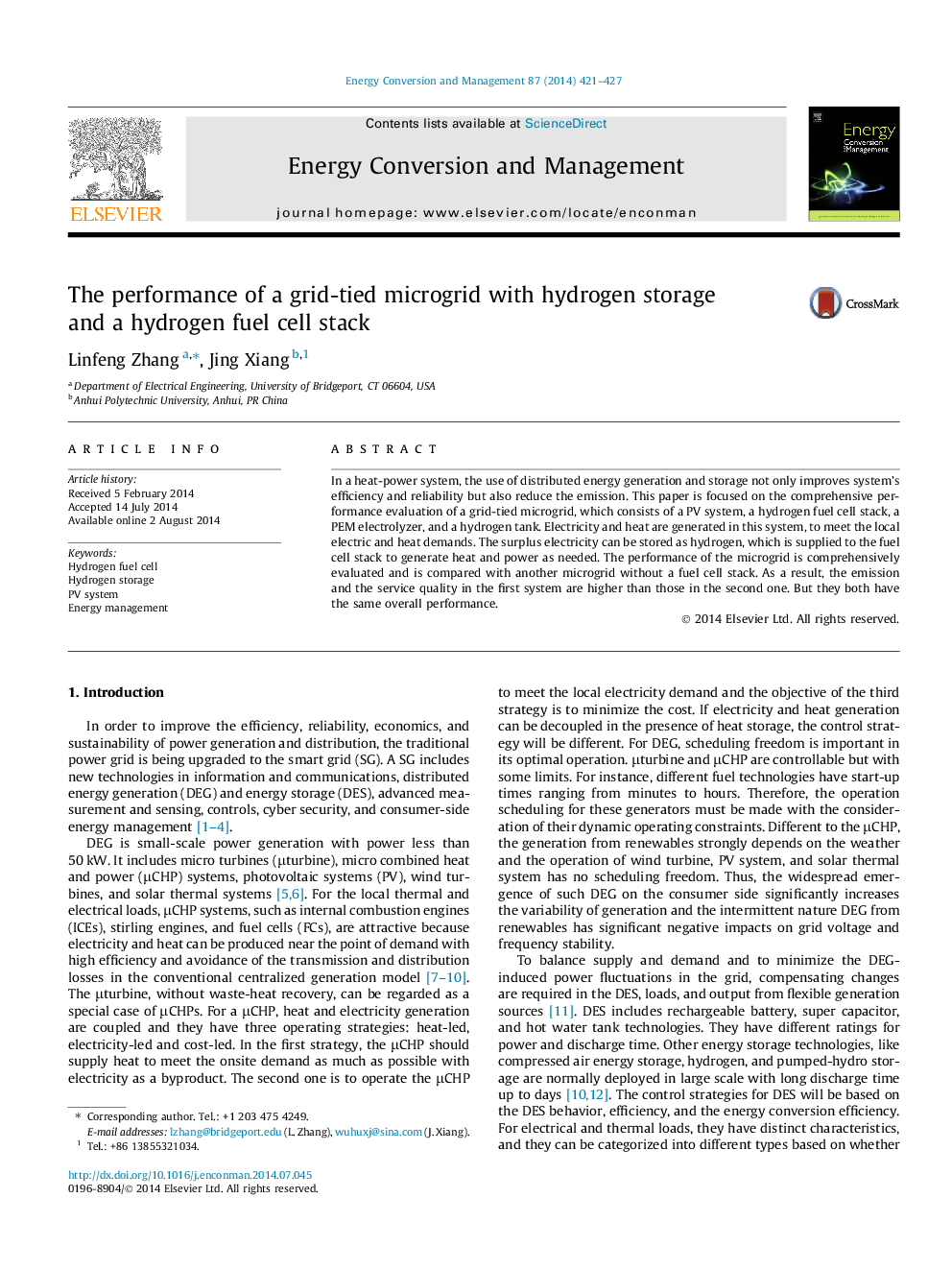| Article ID | Journal | Published Year | Pages | File Type |
|---|---|---|---|---|
| 760687 | Energy Conversion and Management | 2014 | 7 Pages |
•Two microgrids with different structure are simulated.•Their performance are comprehensively evaluated and compared.•The one with DES and a FC stack has high environmental and quality indexes.
In a heat-power system, the use of distributed energy generation and storage not only improves system’s efficiency and reliability but also reduce the emission. This paper is focused on the comprehensive performance evaluation of a grid-tied microgrid, which consists of a PV system, a hydrogen fuel cell stack, a PEM electrolyzer, and a hydrogen tank. Electricity and heat are generated in this system, to meet the local electric and heat demands. The surplus electricity can be stored as hydrogen, which is supplied to the fuel cell stack to generate heat and power as needed. The performance of the microgrid is comprehensively evaluated and is compared with another microgrid without a fuel cell stack. As a result, the emission and the service quality in the first system are higher than those in the second one. But they both have the same overall performance.
